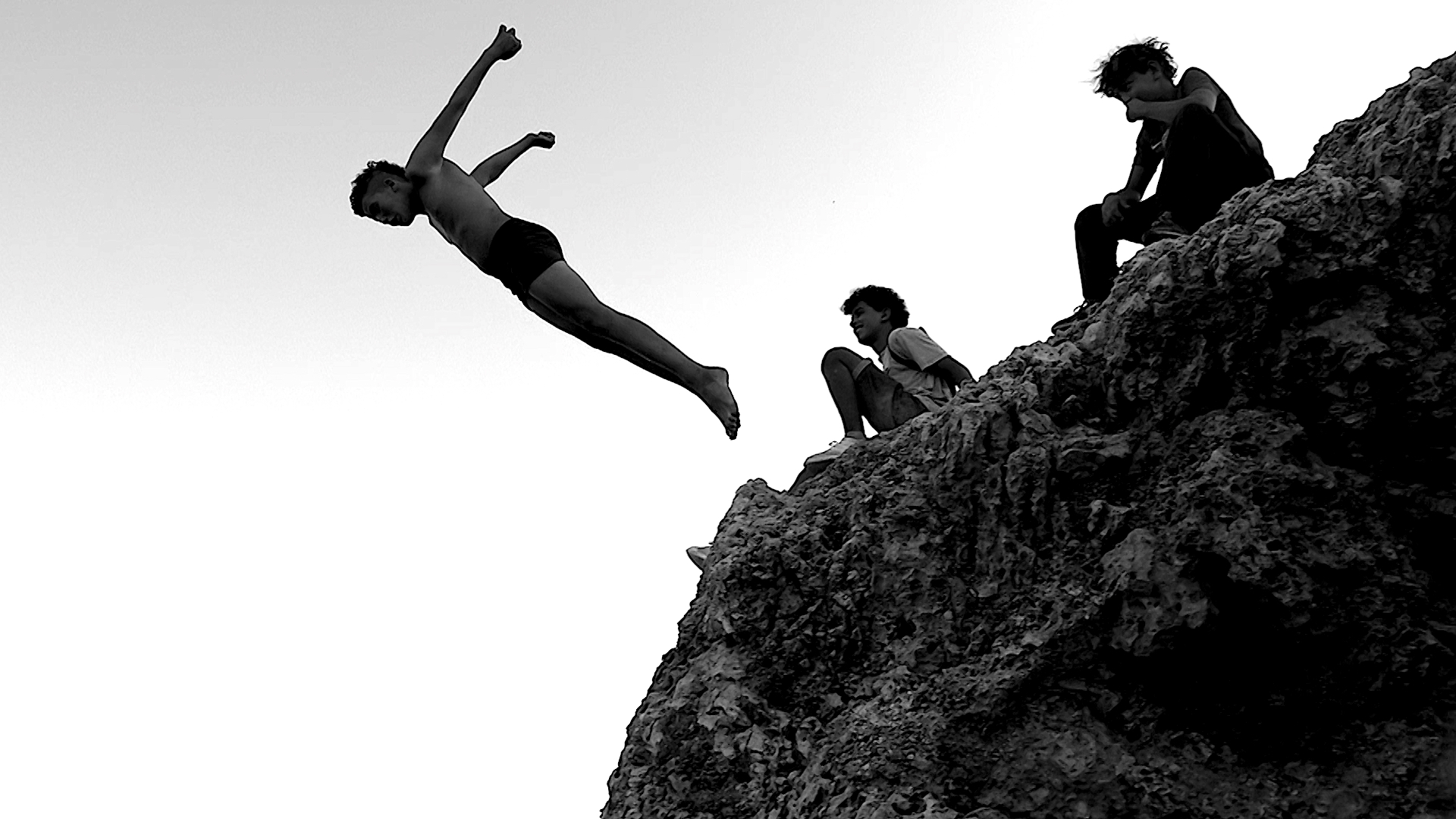What follows is an interview with Sylvain George, one of the most important documentary filmmakers working in France today. The occasion is the start of “No Border,” the first multi-day retrospective of his films in the United States. For two decades, George has directed and self-produced numerous films about the status of undocumented immigrants who navigate a Europe riven by social conflicts resulting from racist border policies, police militarization, and economic austerity. Filmed clandestinely, often in the hinterlands of the so-called “European fortress,” his work keeps alive a tradition of militant cinema that can trace its origins to, among others, the French cinéma engagé of the Popular Front, the US Newsreel collective of the ‘60s and ‘70s, the films of Shinsuke Ogawa in Japan, and those of Jocelyne Saab in the Middle East. George’s work is theoretically robust, drawing inspiration from thinkers and poets that include Henri Micheaux, Giorgio Agamben, Michel Foucault, Jacques Rancière, Frantz Fanon, and, above all, Walter Benjamin. This erudition compliments a film practice—often operating in the heat of battle, whether a protest or police raid—that bridges aesthetic mediation with political action.
Though we have used the term “retrospective” to promote this event, the linearity it implies is inappropriate for thinking through the continuity of George’s works. This became evident in George’s response to our first question, in which we asked the director and poet to reflect on the evolution of his career since the making of his first films. Shying from the term “evolution,” George writes, “I conceive of my trajectory…. as a process of reprises and dialectical displacements, a constellation of forms traversed by persistent questions: what does it mean to live in a world structured by violence? How should we film borders, exclusions, bodies that have been exposed or erased?” George’s oeuvre returns us to these problems no matter where we choose to enter it. In his early diptych, May They Rest in Revolt (2010) and The Outbursts (2011), George collaborated with migrants in Calais, France. The more recent Obscure Night trilogy (2022-25) draws from relationships George formed in Melilla, a Spanish outpost on the Moroccan coast, where young men from throughout North Africa gather in the hope of crossing into Europe.
Through these and other works, George has striven to make images of people caught in the violence of Europe’s border-surveillance regime without himself succumbing to the hierarchical logics of this regime. Or as he puts it in what follows: “In a world where the police are everywhere—in the streets, in bureaucracies, on screens, in language—it becomes crucial to produce images that are not themselves police-like in their structure.” At a moment when so many of our politicians derive symbolic profit from producing images of migrant suffering, the urgency of George’s project seems to us self-evident.
Our conversation was conducted in English over email and has been edited for length.
Screen Slate: This is the first retrospective of your work in the United States. We begin with a short from 2008, No Border, and end on one of your most recent feature-length films, Obscure Night - Goodbye Here, Anywhere [2023]. We would like to know how you understand the evolution of your work.
SG: I’m not certain we can speak, in my case, of an "evolution" in the classical sense—that is, of a linear progression toward a determined form, aesthetic, or authorial position. I conceive of my trajectory rather as a process of reprises and dialectical displacements, a constellation of forms traversed by persistent questions: what does it mean to live in a world structured by violence? How should we film borders, exclusions, bodies that have been exposed or erased?
These questions are present from No Border onward—perhaps in a less explicit form, but just as foundational. What cinema allows me to do is not so much to resolve them—or even to formulate them definitively—but rather to deepen them by working on regimes of visibility, gestures of seeing, and forms of attention. It is therefore not a matter of “evolution,” but instead of critical intensification, of increasing complexity, of heightened listening to that which resists assignation.
Nonetheless, two moments can be identified as methodological or existential inflections—not as ruptures, but as nodes of productive tension within the whole.
The first is associated with the films shot in Calais: May They Rest in Revolt and The Outbursts. There, a realization crystallized: that cinema is certainly not a tool for testimony, but a dialectical instrument for the profanation of perceptual regimes. It is not a matter of “showing” exile, but of actively critiquing the ideological techniques that render some bodies visible as threatening, others invisible as undesirable. The consideration of European migration policies thereby joined a deeper reflection on “bare life” (Giorgio Agamben), on state violence, and on the mechanisms of marginalization. But this was already, fundamentally, an existential gesture: to film as a way of redefining oneself, of de-assigning oneself, of traversing alternative regimes of presence.
A second moment of inflection is linked to the films made under more precarious conditions, in urgency, with little or no funding: L’Impossible – Pages arrachées (2009), Vers Madrid – The Burning Bright (2014), Paris is a Moveable Feast - A Film in 18 Waves (2017). These works do not represent a thematic or affective intensification, but rather a different relation to the very conditions of creation: short and rapid shooting times akin to those of reportage, condensed gestures, transient forms—I have called these "experimental newsreels." The precarity of their creation is not a defect; it becomes a generative constraint, one that demands inventing forms outside conventional production circuits. These are films which, through their very fragility, accompany uprisings, erasures, instants of rupture.
But the whole of my work—from the feature films to these smaller forms—participates in the same gesture of anthropological decentering. It is never about affirming a position of authorship, still less about claiming a cinematic identity, but instead about disarming any pretension to authority, any idea of mastery over the gaze. Cinema thus becomes a space of exposure to that which exceeds the human, to that which traverses bodies, cities, voices, landscapes—a tool for opening onto the unstable, the undecidable, the inappropriable.
SS: Five years separate the release of Paris is a Moveable Feast and Obscure Night - Wild Leaves [2022]. The Obscure Night project would eventually result in three feature-length films. [The third part, Obscure Night - “Ain’t I a Child?”, had its premiere in April at the 2025 edition of Visions du réel] Did you always conceive of this project as a trilogy, or did its scale grow as you filmed?
SG: Obscure Night is situated in direct continuity with my work on European migration policies, following a trajectory that began with my early films in Calais. This work demands its own temporality: slow, deep, open. It does not unfold according to a program or a predetermined plan. It proceeds from a fidelity—a fidelity to presences that history denies, to bodies expelled by law, to existences erased by dominant regimes of visibility. Fidelity also to a formal and ethical imperative: to film without appropriating, without categorizing, without reducing.
Initially conceived as a single film, Obscure Night became a trilogy. Not out of ambition or expansion, but because the very conditions of shooting—the encounters, the temporal rhythms, the locations, the silences—determined this. It was the concrete circumstances—human, political, meteorological, sensual—that gave rise to the form, shaped it, complicated it, displaced it. It was not a matter of forcing reality to fit a narrative structure but of accompanying what emerged, of allowing the form to arise from within the cinematic experience itself.
In this sense, cinema is not an art of execution, but a practice of presence. It is not about “filming something,” but about opening a field of perception in which the world may appear otherwise—outside dominant narratives, outside administrative categories, outside logics of identification. Each film in Obscure Night is thus a threshold, a stratum, a fragment of night that does not illuminate but excavates. These are films written in shadow, in withdrawal, in incompletion—attuned to what insists, what resists, what escapes.
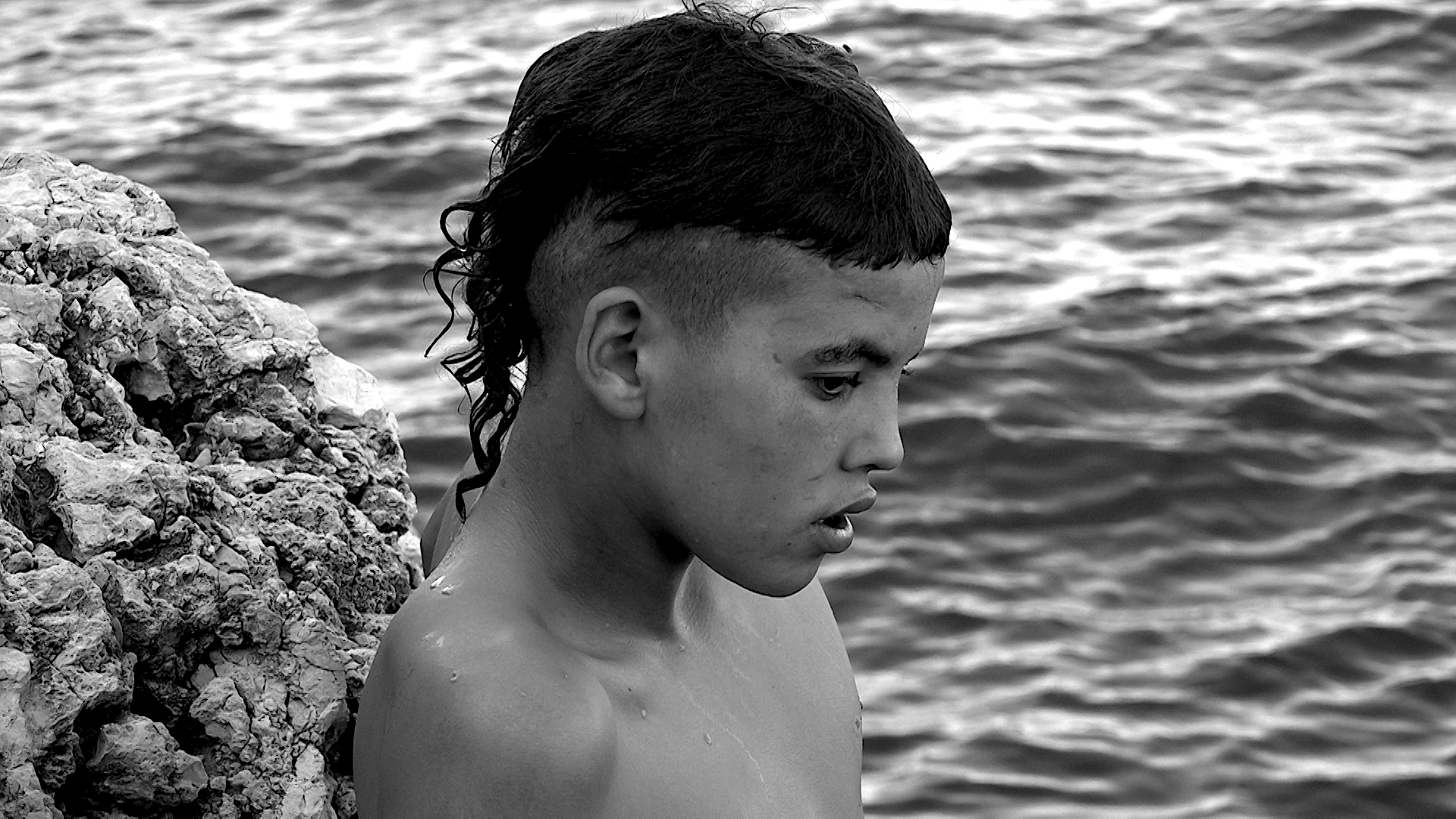
SS: You have often been asked about the relation between you and the people you film during the creation of your work. You recently spoke about your working process with the children in the Obscure Night films. We are curious about how these relations continue once your films have been made. Do they ever watch your films?
SG: Yes, of course—it has happened, on several occasions, that people I filmed were able to see the films. And I do think it’s important, whenever possible, to make these images accessible to those who appear in them (if they so wish, and in conditions that suit them: in a cinema, remotely, in a private or collective setting...) I try to make this a concrete, real possibility. Malik, in particular—who plays a central role in Obscure Night—saw the first two parts. He saw them both in the cinema and via an online link. He even accompanied me to a few screenings in Paris and contributed, with remarkable acuity and sensitivity, to the translation of several scenes. This collaboration was not meant to "validate" the images but to extend—in a different space—what the filming process had already been: a shared gesture, a form of attention, a relation of listening.
But many of the people filmed will never see the films. Not out of neglect but because the political, material, and existential conditions of their lives make it difficult, uncertain, sometimes impossible. Many are in exile, in transit, under threat of deportation, or have already disappeared. They live within regimes of exception where even the simple act of viewing a film is structurally obstructed. This impossibility must be acknowledged not as a moral failure but as a symptom of the violence of the world we inhabit.
SS: Pedro Costa has spoken of the importance of filming without the police, especially while filming undocumented immigrants. For him, the refusal to collaborate with the police radically changes the process of making a film. In your work, police violence is a recurrent subject. This is true both when you are working with immigrants (for example in The Outbursts or the Obscure Night films) and when you are filming protest movements (here we are thinking of Le joli mai, 2017). What is at stake when we produce images of the police state?
SG: The first thing to say is that one never really “films the police.” What one films are effects of power, dispositifs, forms of intimidation, circuits of fear, obstructed bodies. The police are not merely an institution. They are a form of the visible. They shape movements, perceptions, speeds, access to light, to speech, to space. Filming in a territory saturated by police presence—Calais, Paris, elsewhere—does not simply mean filming against the police: it means filming within a topography that has already been redrawn by them, an architecture of constraint.
Pedro Costa is right to say that filming without the police is not a moral stance but an aesthetic and political condition of possibility. It doesn’t just mean refusing explicit collaboration; it means deactivating the police gaze, refusing to film according to its imposed categories (suspects and victims, the legitimate and the illegitimate, the visible and the invisible). It also means rejecting the logics of accusation, of proof, of confession—logics that often persist even within critical images.
In a world where the police are everywhere—in the streets, in bureaucracies, on screens, in language—it becomes crucial to produce images that are not themselves police-like in their structure. This means avoiding transparency, avoiding univocal revelation, avoiding imposed truth-effects. It means filming differently. Framing differently. Slowing down. Shifting. Making something felt without categorizing it. Creating a space where visibility is no longer synonymous with control.
My films do not depict police violence in a direct or frontal way because that violence has already become an image. It is pre-constituted, absorbed into a media flow that integrates it, recycles it, neutralizes it. To show a baton strike is not enough—it can even reinforce narratives of legitimization. What I seek is the aftershock. The trembling. The evasion. The glance that turns away. The body that tenses. The breath that falters. Police violence is not exhausted by its spectacular gestures. It is structural. It is atmospheric. It is inscribed into the very architecture of the city—in how one walks, pauses, remains silent.
The work of cinema, then, is to make this diffuse state violence appear without reproducing its forms. It is a critical operation but also an aesthetic one. This is why my films work with black and white, with duration, with repetition, with fragmentation. These are gestures of refusal. Gestures that deactivate the regime of transparency. As Benjamin said: it is not enough to denounce violence—we must break the structures that make violence appear “necessary” and intelligible.
But it does not suffice to replace an image of domination with an image of counter-violence. It is necessary to suspend the logic of confrontation, make lines of flight appear—affective escapes, gestures that dismantle the grid. That is why I give so much importance to minute gestures: a sprint, a silence, a fire lit at night, a disappearance. These are gestures that elude the police gaze. They do not fit into its categories. They are out-of-frame in the strongest sense. To film without police is to film against the police within the image. It is to reject police categories. It is to open a breach.
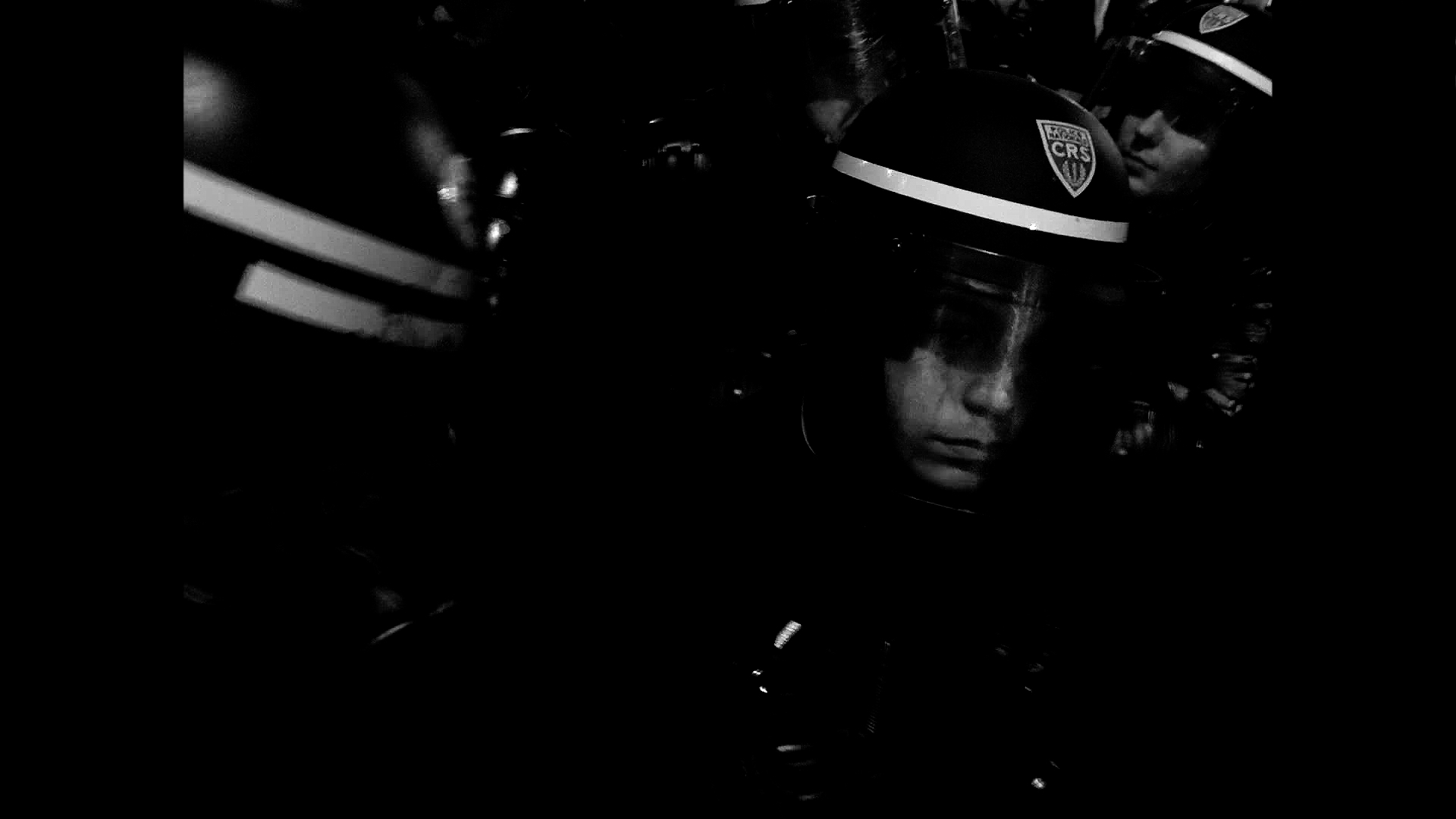
SS: At times, your films bring to mind various kinds of militant cinema, from the “cinéma du peuple” [1913-14] and the tradition of cinéma engagé, as well as the work of Leo Hurwitz and the Workers Film and Photo League. As a writer, you have also published on Jean-Luc Godard, Robert Kramer, Angela Ricci Lucchi and Yervant Gianikian, Andrea Tonacci, and Pier Paolo Pasolini, among others. Where does the history of cinema enter your images or your filmmaking process?
My relationship to the history of cinema is first and foremost one of dialogue—but a critical, conflictual, fertile dialogue. What matters to me is to reactivate what this history holds: vital power, unassimilable gestures, moments of incompletion (be these aesthetic or political).
The films of Leo Hurwitz or those produced by the Workers Film and Photo League interest me not only for their content, but for the way they invented forms capable of organizing a counter-perception of the world. Through framing, editing, and rhythmic work, they proposed another cartography of the sensible. These are not merely illustrative militant films, but critical forms, gestures of aesthetic insubordination. That, for me, is foundational.
But this dialogue is not limited to a strictly militant tradition. It includes filmmakers such as Kramer, Godard, Gianikian and Ricci Lucchi, Tonacci, Pasolini—artists whose works continuously challenge established forms, strive to break the fixity of cinematic language, and construct political thought through discontinuity, montage, fragment, interstice. These are works that think—not "about" things but through form. It is at this level that the dialogue is established. What matters to me is not to cite these filmmakers, nor to place myself within some museum-like continuity. I seek, on the contrary, to rekindle an active, insurgent, impure memory—a memory that opens a space of montage between times, forms, and regimes of thought.
I think here especially of Godard’s work, particularly Histoire(s) du cinéma [1987-1998], though many of his films could be listed here, including Notre Musique [2004] which, for me, is one of his most important works. Godard’s films give us not a narrative but a dialectical constellation, a montage of heterogeneous forces, a topography of conflict. It is not about writing history so much as interrupting the way a story is written, the way it solidifies. A film, for me, is always traversed by constellations of past cinematic gestures, reactivated not as references but as critical intensities. The memory of cinema is a fragmented memory, a memory of dissident forms that resist the homogenization of language.
In writing about these filmmakers, I do not seek to produce a theory but to pursue this dialogue in another language. To think with them, sometimes against them, always in deviation. Because what matters to me is not to belong to a tradition but to activate unfinished possibilities, to make a subterranean history resonate against dominant narratives. And cinema, precisely, is one of the few places where this gesture is still possible—provided we refuse the pacification of the gaze.
SS: We’re very interested in your theoretical work as well. Walter Benjamin, whom you’ve already mentioned, appears frequently as a key interlocutor—you reference him throughout your writing as well as in your films. Similarly, we know that your work has drawn some inspiration from Nicole Brenez, who has championed your work. Could you talk about your relationship to film theory?
SG: I have never conceived of theory as a position of oversight, nor as an apparatus of legitimization. It comes neither before nor after. It is within the work itself—as tension, as counterpoint, as breath. I do not believe in illustrative cinema. Nor do I believe in a cinema “liberated” from all thought, that claims to speak from some pure immediacy of the world. What I seek is a cinema that is traversed by, affected by, set into vibration by the forces of thought—in the very moment of its making.
Walter Benjamin is an essential companion—not as a tutelary figure, but as a transmitter of forms, of concepts, of ruptures in time. His writing—fragmentary, unfinished, stratified—taught me to think without a system, but not without rigor. His critique of progress, his reading of history as a field of ruins, his understanding of montage as a dialectical form, his reinterpretation of messianism outside any eschatology: all of this has profoundly shaped me. Not in a relation of lineage, but as a way of setting my own filmic gestures into motion.
Benjamin does not think cinema in order to comment on it: he inhabits it. In “The Work of Art in the Age of Its Technological Reproducibility” [1935-39], but above all in his writings on the city, on childhood, on experience, he deploys a thinking of the sensible that is already montage, already dialectic, already political. Filming, then, is not about applying concepts—it is about entering into constellation with them, putting them to the test, refracting them, letting them alter how one frames, how one cuts, how one gives or does not give to be seen. Cinema becomes a space of embodied thought, profaned, and sometimes trembling.
Nicole Brenez, in another register, plays an equally decisive role. She is not just a historian of cinema. She is, for me, a thinker of formal potential: of what a shot, a rhythm, a gesture can do when it escapes the dominant grammar. Her approach to radical, experimental, militant, minor cinema opened pathways for me—not to follow, but to traverse. What I retain from her work is this capacity to think films from their own political force, without reducing them to their themes or intentions.
My relationship to theory has evolved—not in the direction of distance, but of decentering. At first, perhaps due to less confidence in my own means, certain positions may have been more explicit, more affirmed — without ever succumbing to didacticism. I felt the need then to draw certain lines more clearly, to inscribe the gesture within a horizon of legibility. Today, what matters to me is that thought be carried by the form itself, that it emerge in a silence, a reverse shot, a darkness. I seek less to articulate than to let resonate. Less to assert than to trouble regimes of readability. I now conceive of theory as a form of thought intrinsically embedded in the filmic act, a thought that does not illuminate the film from the outside, but hollows it out from within. It acts in the very material of the image: in a grain, a flicker of light, a rhythmic dissonance, a silence. It does not precede images, does not order them, does not judge them. It is replayed in them, lost in them, recomposed through them.
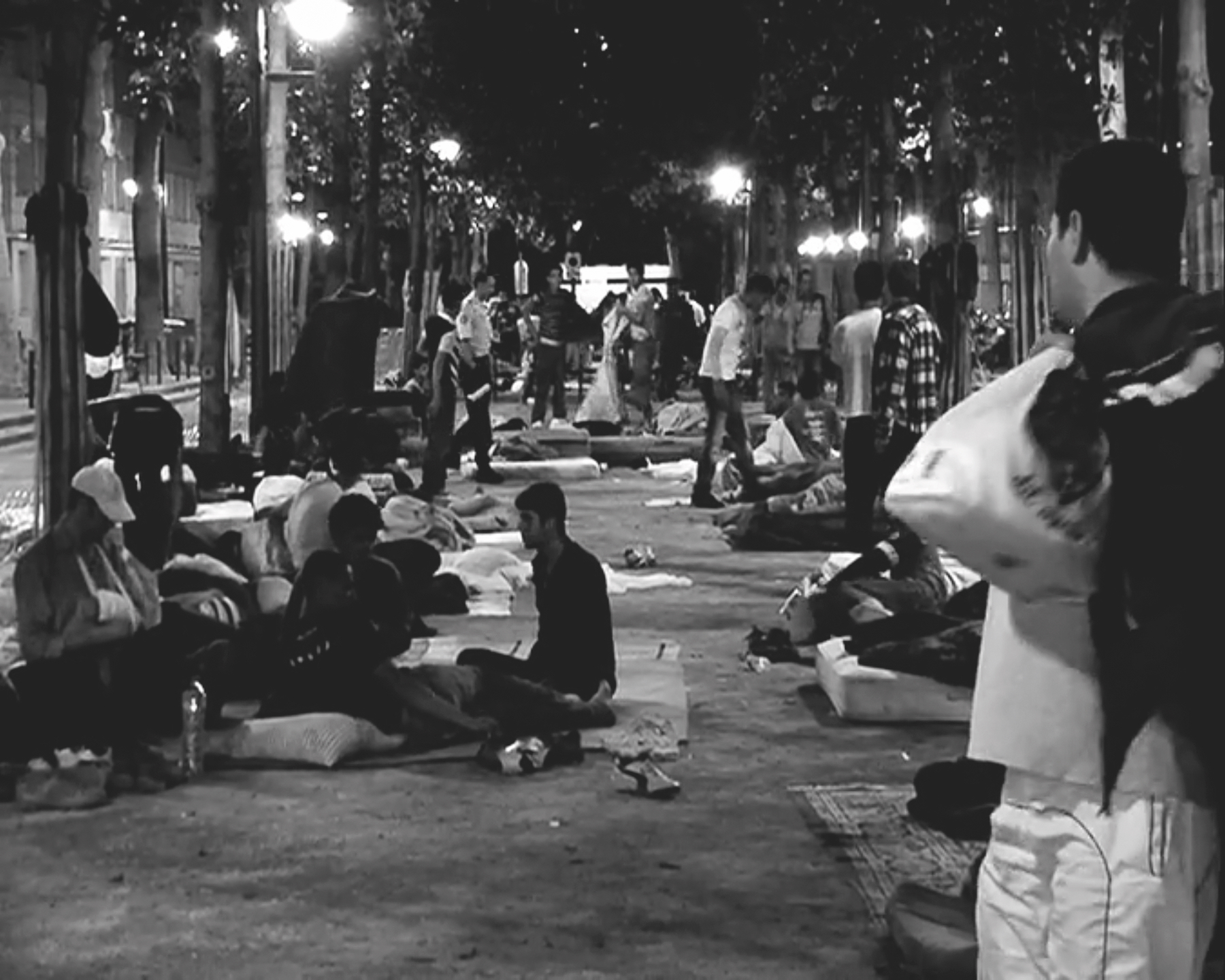
SS: We were wondering if you could speak about the importance of race in your films. Many of your films deal with the conditions for Arab and African immigrants in France. In a recent essay, “Une autre musique,” you cite the anthropologist Mohamed Amer Meziane’s critique of the Eurocentrism of Western metaphysics. How do you understand your films’ relationship to contemporary racial politics, in Europe or more broadly?
SG: I do not film “racialized subjects.” I film men, women, and children whose existence is—historically, politically—caught in a process of racialization, that is to say: exposed, administered, rendered invisible, essentialized. Cinema, for me, is not about reiterating this assignment, nor about “representing” it with more accuracy or nuance. It is about deactivating its perceptual foundations. Racialization is, above all, a structure of looking—a colonial grammar of the world. It hierarchizes, naturalizes, divides, and codes appearances: who can appear, how, in what frame, under what light, with what voice. It is not merely social or historical; it is metaphysical.
It is in this sense that the analyses of Mohamed Amer Meziane are crucial to me. In The States of the Earth: An Ecological and Racial History of Secularization [trans. 2024], he demonstrates that Western secularization is not the end of religion, but its transformation into a techno-political metaphysics—through which colonial, racial, and economic power continues to exert control over the living, over matter, over flows. Race becomes the invisible sign of an inverted providential order, a materialist evangelization that structures the world under the guise of universality, development, and progress.
What cinema can do, then, is not to denounce directly, nor to produce effects of awareness. It can—if it commits to the necessary rigor—become a space of suspension, of dis-identification, of decentering the gaze. It can host bodies, gestures, silences, not as figures to be included, but as enigmatic, irreducible, profane forces. The point is not to integrate invisibilized figures into a new centrality, but to unseat the center itself—to make the white, masculine, bourgeois universality that still underpins the contemporary visual order tremble.
This gesture is something I carry out in dialogue with a number of voices: Benjamin, [Frantz] Fanon, Meziane, [Édouard] Glissant, [Achille] Mbembe, [Judith] Butler, [Donna] Haraway—thinkers who have worked to dislodge emancipation from its inherited forms: the master-slave dialectic, the model of the autonomous subject, the idea of progress as an ascending line. These are thoughts that accompany me because they do not offer solutions: they unsettle frameworks, refuse stabilities, and work from the margins—from what does not fit.
SS: One of the subtler motifs, both in your films and your writing, is their relation to nature and ecology. We’re thinking, for example, of the subtitle to the first Obscure Night, “wild leaves.” What role does ecology play in your thinking about film?
SG: I never use the notion of “nature” in a nostalgic or separate sense. What is called nature in my films is neither a peaceful exterior nor an untouched essence. It is a space traversed by conflicts, violences, the gestures of the living, and the scars of power. A space often wounded, fractured, administered—but also bearing its own density, a rhythm that escapes domination.
What I try to film are not landscapes: they are inhabited, political, exposed environments. In Calais, for example, the “jungle” is not a natural place, it is a space of assignment, of relegation, of re-housing outside the law. But it is also a zone of survival: a geography of shadows, of tenuous gestures, of fires lit in the wind. A topography of precarity—and of dignity. What I call “nature” here is not the vegetal or mineral world as such; it is what resists appropriation, what exceeds function, what escapes calculation.
From this perspective, filming a tree, a reflection of light on water, a wind lifting a tarpaulin, is never illustrative. It is about making another density of the world appear—one that cannot be instrumentalized. A density marked, sometimes wounded, but still present—like a recessed utterance, a discreet witness to what human bodies can no longer say. The image then becomes a site of passage: between the living and that which, in the world, continues to signal despite abandonment.
But this lament of nature cannot be separated from a broader issue. Modernity—particularly in its Cartesian version—was built on a fiction: that of man as master and possessor of nature. This fiction, taken up and amplified by colonial, industrial, and technological rationalities, has justified not only the exploitation of environments, but also the exploitation of humans by other humans. There is no rupture between the two: the domination of the earth and the domination of bodies proceed from the same matrix, stem from the same metaphysical delusion. To refuse the former is already to contest the latter. In this perspective, to defend nature is to defend the living in its entirety.
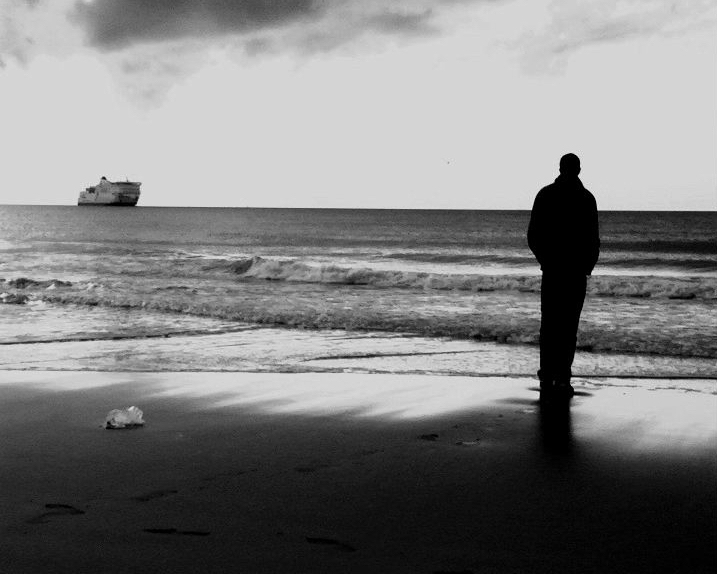
SS: Though you deal mostly with immigration and border politics in Europe, we feel your films are just as pertinent to American audiences, at a moment when xenophobic violence against immigrants is more and more justified by the state. Do you have any thoughts about what it means to show your films in the United States?
SG: I believe there are, today, deep—though asymmetrical—resonances between European migration policies and those implemented in the United States, and more specifically in California. The point is not to transpose one context onto another, nor to universalize a singular situation, but to name a structure: that of a globalized regime of governance through expulsion, where the border becomes less a place than a diffuse apparatus of differential management of lives.
This regime operates through the suspension of law, the privatization of surveillance, the outsourcing of violence, and the logistical coordination of human flows. In both Europe and the United States, camps, detention centers, waiting zones, automated checkpoints are not anomalies: they are the infrastructures of a global order, in which the figure of the undocumented person, the exile, the climate migrant becomes a point of condensation. For the same function is assigned to them: that of the modern scapegoat, the stateless internal enemy, exposed without recourse, sacrificable without scandal.
In Melilla, in the jungle of Calais, or in ICE detention centers in Bakersfield, the same logics are at work: sorting, overexposure, invisibilization, exhaustion. The contexts differ, but the structures of capture and relegation follow similar principles: infra-legal status, non-belonging, logistical management of bodies rendered available, deportable, or simply erasable.
This logic is not new. But it intensifies today under the combined effect of several forces: the return of authoritarian sovereignties, the generalization of algorithmic security regimes, the collapse of ecological thresholds, and above all, the continuation of extractivist and predatory economic logics. Undocumented persons are not only criminalized as intruders: they are necessary to the reproduction of the system, tolerated in illegal economic circuits, exploited in informal sectors, and at the same time designated as permanent threats, figures of saturation and instability. They are visible as problems, but invisible as subjects. Visible as fingerprints, data, risks—but without faces, without rights, without voice. Here, in another guise, Walter Benjamin’s notion of “mythic violence” is reactivated: a violence that does not strike to punish, but to inscribe an order, to produce a hierarchized world.
In this context, my films do not seek to “represent” migrants, nor to “show” a reality. My films do not seek to “speak about” this situation, nor to denounce this structure. They do not offer a discourse on immigration: they interrogate the very form through which the visible is constructed, administered, imposed. They disorganize the perceptual frame in which certain lives appear as illegal, inferior, undesirable. They shift the gaze, not to correct a missing image, but to make visible that which escapes, that which insists, that which resists.
In this sense, my films do not “address” a Californian or European audience. They work on perception itself. And this operation, if it resonates in such different contexts, is because it touches something structurally shared: the production of a world in which certain bodies are rendered indefinitely deportable, indefinitely available, indefinitely erasable. Cinema can—if it commits to it—refuse the language of power. It should not, in my view, seek to rehabilitate figures, nor to balance representation. It must interrupt the narrative. It must disorganize the gaze. It must create a disturbance within the economy of appearances.
And if my films can find a form of resonance in California today, it is not by analogy, but because they propose a language of distance, a space of undecidability, a zone of counter-time—where something insists, without answer, without solution, without promise. For what is at stake, ultimately, is not merely a migration policy. It is a contemporary political anthropology, a planetary organization of the visible and the invisible, where life becomes a variable for adjustment, a material to govern, to filter, to displace.
Or again: perhaps my films can be shown—and received—in California today because they resonate with another regime of control, another space where state violence is being reconfigured: through the militarization of borders, the privatization of surveillance, the criminalization of climate-driven migration, the relegation of exiles into zones of legal nonexistence. Because they pose a question: what can an image still do in a world saturated with security narratives and capture devices?
These films do not “explain” anything. They do not deliver keys. They do not offer directed empathy. They seek instead to create a disturbance, a counter-rhythm, a space where the viewer can no longer comfortably locate themselves. A space of un-assignability. In that sense, they do not “speak to a Californian audience” as an external entity, but to the lines of tension that traverse every territory, every body, every gaze. They are not translated for another context. They persist as dissonant fragments, shards of night, gestures of disorder.
No Border runs April 28-30, with The Outbursts (My mouth, my revolt, my name) tonight, April 28, and Obscure Night – Wild Leaves (The Burning Ones, the Obstinate) tomorrow, April 29, free with RSVP at the Roxie, and Obscure Night—Goodbye Here, Anywhere Wendesday, April 30, at BAMPFA.
